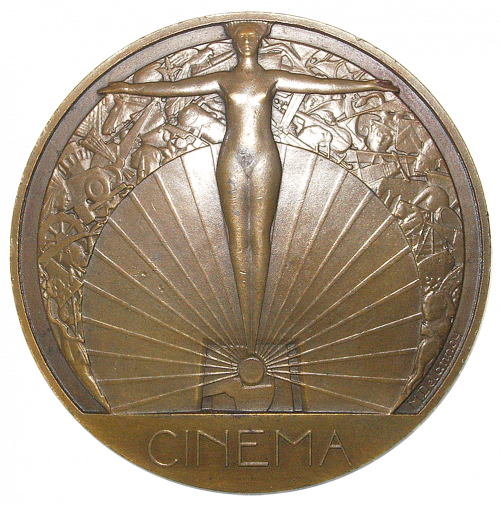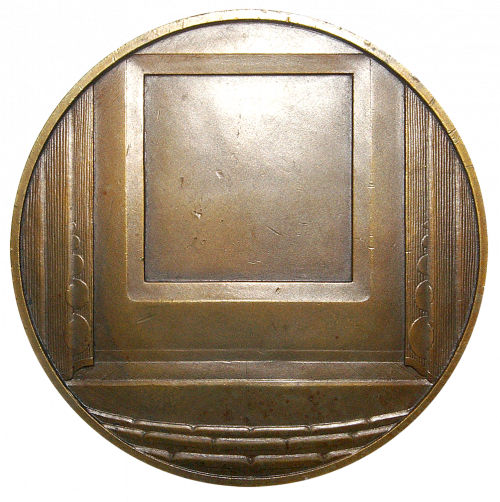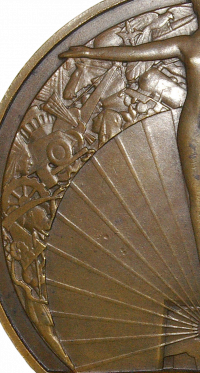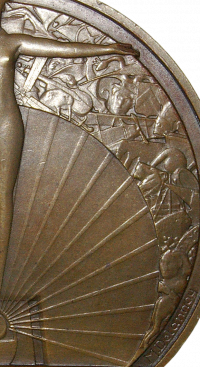M072
Bronze-like, AU
68 mm (2-5/8”), 148 grams
HISTORY: Even amid a worldwide depression, the 1930s were years of a highly successful French film industry. However, as the dark hours of a looming war with Nazi Germany approached, writers and directors began migrating out of France, away from the inevitable onslaught. On May 10, 1940, the German invasion began. Within six weeks, the Allied Forces were defeated, and France, Belgium, Luxembourg, and the Netherlands had been conquered. On June 14, German forces entered Paris unopposed. By June 22, an armistice was signed, ending the hostilities between the two countries. France was now under Nazi rule.
For an instant, war brought the film industry to a standstill. The Germans, however, understood the importance of French cinema and offered incentives to continue production. Continental Films was founded, allowing writers, directors, and actors a wide latitude in artistic creation. In subtle ways, this company was used by the French to express their anti-Nazi feelings.
OBVERSE: Maurice Delannoy (1885‒1972) was a highly regarded sculptor and medalist, having settled into the Art Deco style of that era. By 1940, Delannoy was already a well-established artist, having been awarded the Légion d’honneur in 1936 (see also M073 and M079).
As the war raged around Europe, the French continued creating films—30 full-length movies within a four-year span. Delannoy, who remained in Paris, was commissioned to design this “CINEMA” medal, celebrating the vibrancy of the craft and medium. He chose a Deco nude with outstretched arms, radiating from a projector lens. To her right and left are images of movie characters and themes—a locomotive, an airplane, a ship; a lion, a walrus, a dove; faces, tools, instruments. Perhaps, looking closely, we may discover subtle, anti-Nazi messages.
REVERSE: Empty theater seats face a movie screen with curtains opened. The screen is obviously meant as a space for an engraved award presentation, which in this case never happened.
EDGE: Smooth-grooved, engraved with the Paris Mint cornucopia followed by “METAL·F.” During the occupation, bronze was used for war purposes, so other metals were used by the Paris Mint for the production of coins and medals. On August 25, 1944, Allied Forces liberated Paris after fierce fighting against the German occupiers. The war raged on for another eight months, finally ending with the German surrender in Berlin on April 30, 1945. The Paris Mint, once again, resumed production of its medals with the use of bronze.





